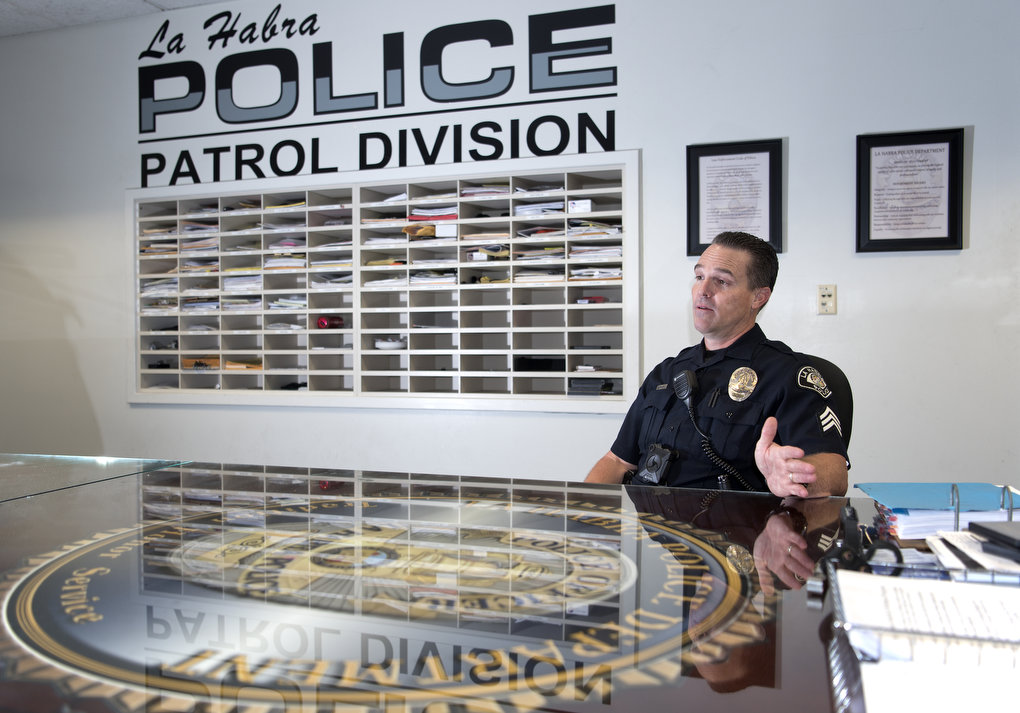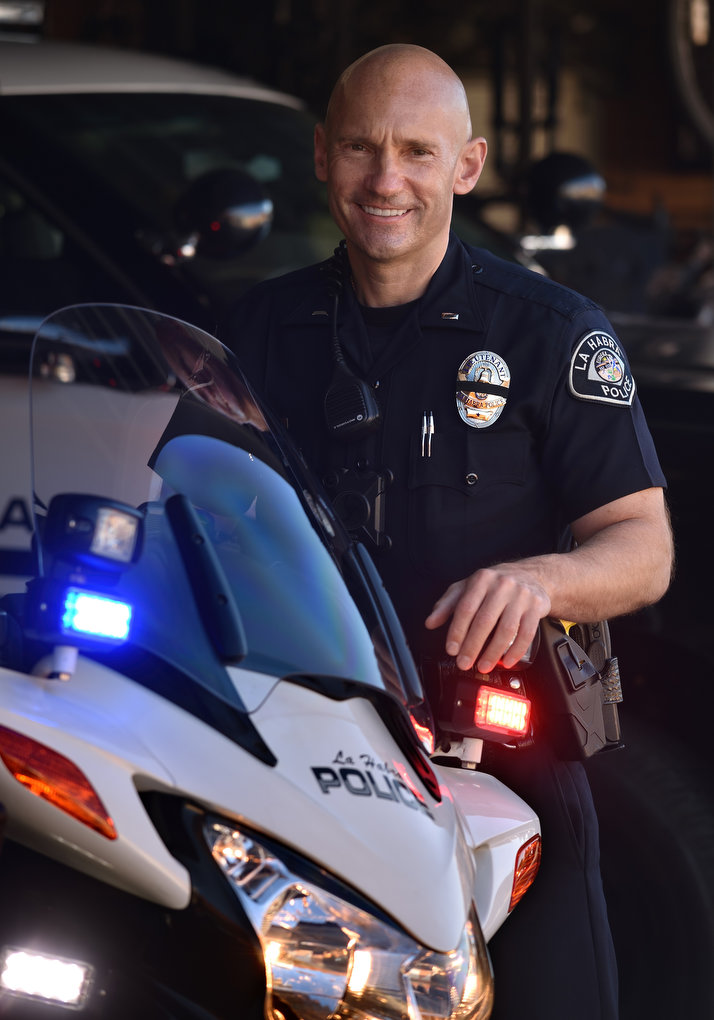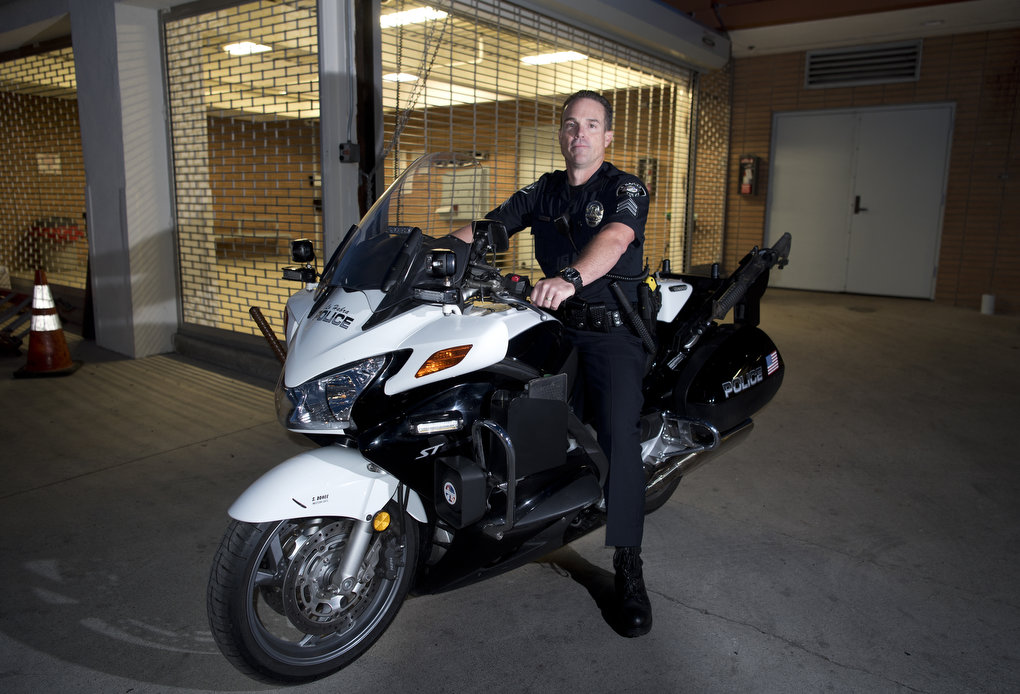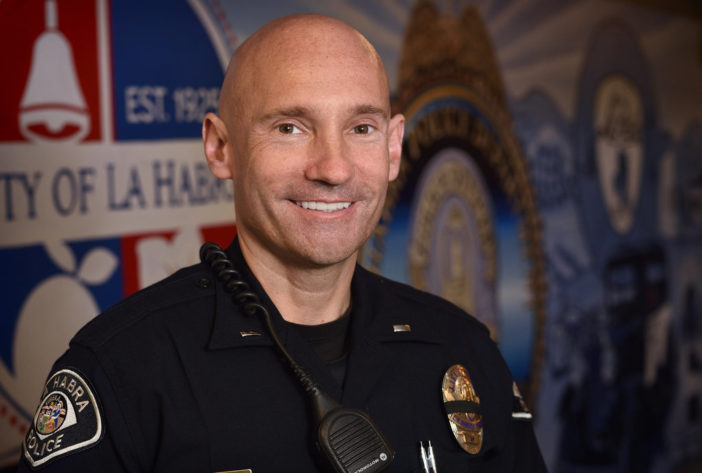Motorcycles have an advantage when it comes to policing — they’re easily maneuverable, their riders are more approachable, and they can fit through spaces patrol cars cannot.
However, motor officers face additional hazards from road conditions, motorists, and debris that make riding dangerous.
“You don’t have any protection around you like a car,” said Lieutenant Brian Miller of the La Habra Police Department. “The main reason why it’s dangerous is people don’t see you, especially because you’re a small target and people have a hard time judging the speed of motorcycles coming toward them.”
That’s why La Habra’s motor officers spend four weeks training in-house, followed by a comprehensive two-week, 80-hour class that trains them on stopping distance, turning movements, reaction times, slow maneuvering, accident avoidance and much more, La Habra Police Department Sergeant Kim Razey said. Motor officers keep up to date with additional training every four to six weeks.

La Habra Police Patrol Sergeant Kim Razey stands inside the police station.
Photo by Jeff Antenore/Behind the Badge OC
“One of the most intense classes I’ve ever taken in my whole career was the motor academy,” Miller said. “By the end of the day you’re just wiped out because you’re riding all day maneuvering a heavy motorcycle at slow speeds and mentally you are drained because you are constantly scanning for threats.”
But that extensive training may have saved his life.
Miller was riding a police motorcycle on the 5 freeway nearly 10 years ago when he was hit by a tire that bounded toward him so quickly he wasn’t able to avoid collision. Without that training, Miller may not have been able to avoid disaster.
“One hundred percent I would not be here today,” Miller said.
The tire bounced over the rail dividing north and southbound traffic, and then across the lanes toward Miller.
“I was probably going 65–70 (miles per hour) at the time and the tire must have been going 35–40, so you’re looking at a closing distance around 100–110 miles an hour,” Miller said. “It doesn’t give you much time to react.”
He leaned to the left and the tire hit the right side of the bike, ripping off the side of the faring, snapping his baton in half, destroying his Lidar, and snapping the top off his Maglite flashlight.
“The right side of my leg felt like it was burning, like a real bad sunburn,” Miller said. “It generated so much heat (and) it just barely scraped my leg… There were actually particles of lint and debris embedded in my skin.”
“I could have very easily been killed,” Miller said. “If it would have hit me just a few inches more to the center, I would have been dead. If it had hit directly on my leg, it would have taken off my leg.”

La Habra Police Patrol Sergeant Kim Razey recounts some of his close calls and dangerous encounters while riding a police motorcycle
Photo by Jeff Antenore/Behind the Badge OC
Attentive riding and motor skills saved Razey’s life, too.
He and another officer were riding west on the 60 freeway near the 57 interchange during heavy traffic when an 8 inch-by-4 inch solid wood wheel chock tumbled across the lanes and landed in his path.
“I tried to veer to my left, but it was coming toward me and I had nowhere to go,” Razey said.
The chock hit Razey’s front wheel, destroying a 6 inch-by-2 inch piece of the motorcycle’s front rim, causing a flat tire, and debris flew up and punctured the radiator.
“I just held on for dear life in a complete wobble,” said Razey, who was a motor officer from 2004 to 2013. “It could have easily gotten out of control and went down.”
Motor officers wear a Kevlar vest, boots, a helmet, and motorcycle pants for protection, but must still be keenly aware of debris that could harm them or get in the path of the bike.
“It was after that ordeal that I started wearing a brace in my mouth because I would clench my teeth so tight,” Razey said. “You just tense up so hard when riding.”
That was the second time Razey’s life was endangered while riding. The first time, a cinder block was in traffic lanes of the 57 freeway and punctured his tire.

La Habra Police Lieutenant Brian Miller was once a motor officer for the agency (with 2.5 years on the motorcycle) before being injured by a tire bouncing across the 5 freeway that hit his bike one day on his way to work.
Photo by Steven Georges/Behind the Badge OC
“You really have to contribute your ability to keep the bike up when unavoidable debris is struck to your training because you just never know when that’s going to happen and you respond as you were trained and practice,” Razey said.
And debris isn’t the only threat to motor officers.
Drivers of vehicles turning left may not see a motorcycle coming or may judge their speed incorrectly and turn in front of the rider’s path.
“All it takes is one person to not stop at a red light and hit you, and you’re dead, you’re gone,” Miller said. “You just don’t have any protection whatsoever. You’re the one that’s hitting up against a car. There’s no vehicle around you to absorb all the energy, it’s just you.”
Weather is another factor, with nothing to protect the officer’s vision the way windshield wipers would for the driver of a car. There are days it’s cold and the rider has no heater to warm them or roof to keep them dry during rain. Other days, it’s 100 degrees without air conditioning or shade. Rocks, bugs, and other small objects can hit riders in the face, or smack into their helmet. And a little bit of water, grease or oil, fresh paint, sand or gravel can make the roads dangerous.
“You’re constantly watching the ground, you’re watching traffic in front of you, 5–6 cars in front of you,” Razey said. “You need to perceive what’s going to happen farther down the road so you can react to it. You sleep well at night when you’re a motor because after 10 hours of riding you’re clearly exhausted.”

La Habra Police Patrol Sergeant Kim Razey sits on a motorcycle outside the police station.
Photo by Jeff Antenore/Behind the Badge OC
With all the dangers of just riding a police motorcycle, these officers still have a job to do, enforcing traffic laws and scanning for other violations of law. The motor officer position is truly a special job and people who can multitask are best suited for the position. Riding safely while scanning for traffic violations and or wanted persons is a talent, and motor officers are a special breed of police officer, the department stated.
But these officers wouldn’t trade the experience for anything. Razey had wanted to be a motor officer since he was a kid watching Ponch and Jon on “CHiPs.”
“I wanted to go out there and ride and enforce traffic laws and hopefully make an impact on the community,” Razey said. ”I believe I changed a few peoples driving habits and maybe saved them from having an accident or being seriously injured.”
“It’s a fun job,” Miller said. “A lot of times when I worked as a motor … I couldn’t believe I was getting paid for what I was doing.”
Traffic officers make a real difference in people’s lives, not just because they give tickets. They educate and change bad behavior, making the roads a safer place to travel, the department stated.
 Behind the Badge
Behind the Badge



